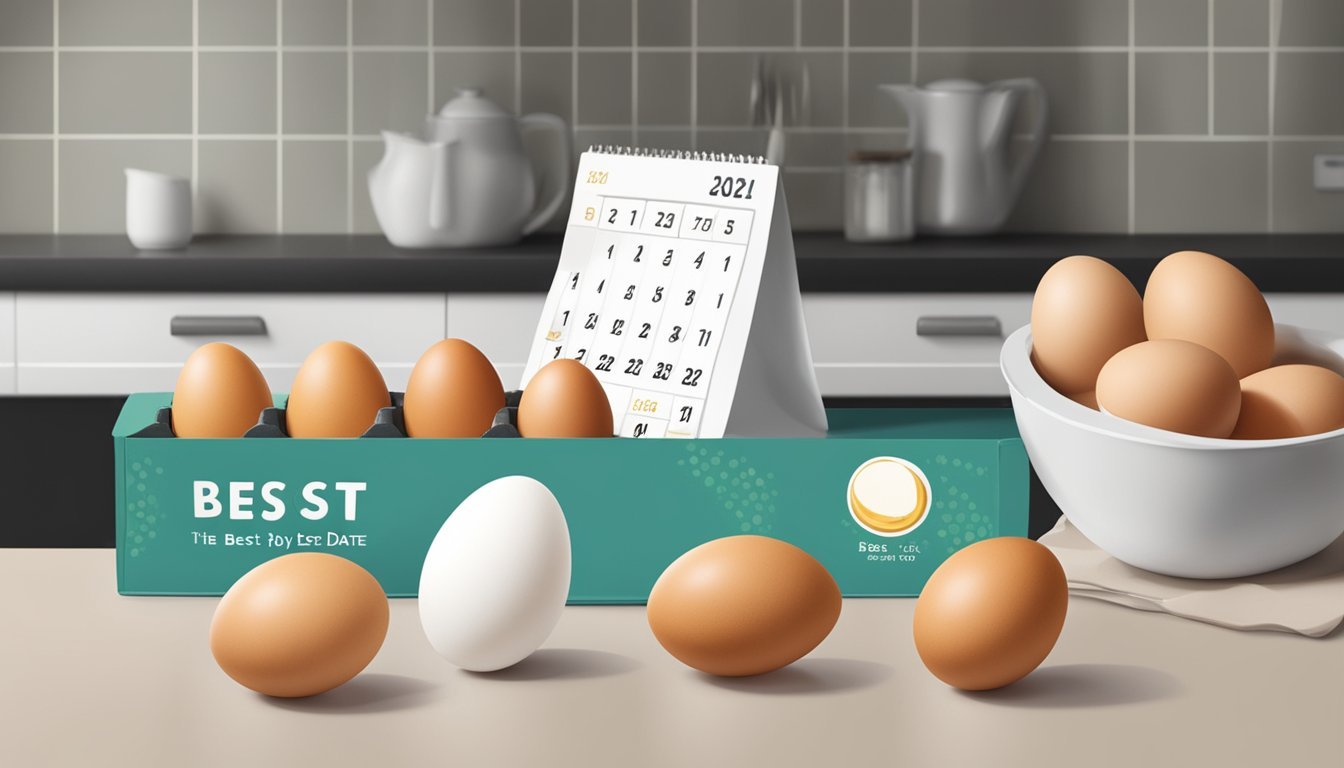Scrambled eggs last in the fridge for about 3-4 days. Proper storage is crucial for maintaining freshness and safety.

Scrambled eggs are a popular breakfast choice, but their shelf life is limited. Storing them correctly ensures they remain safe to eat and retain their flavor. Place the scrambled eggs in an airtight container and refrigerate promptly after cooking. Avoid leaving them at room temperature for extended periods, as this promotes bacterial growth.
Reheat thoroughly before consuming to kill any potential bacteria. Following these simple storage tips, you can enjoy delicious scrambled eggs for up to four days. Food safety is essential to prevent foodborne illnesses and enjoy your meals.
Introduction To Egg Storage
Eggs are a popular breakfast choice. They are rich in protein and easy to cook. But how do you store them properly? Storing eggs the right way keeps them fresh and safe to eat. This is especially important for scrambled eggs.
Importance Of Proper Storage
Proper storage keeps scrambled eggs fresh longer. It also prevents bacteria growth. Bacteria can make you sick. Always store scrambled eggs in the fridge.
- Use airtight containers: This keeps out moisture and bacteria.
- Refrigerate within two hours: This prevents bacteria growth.
- Label containers: Write the date on them. This helps you know how fresh they are.
Common Misconceptions
Many people believe eggs can stay out of the fridge. This is not true. Scrambled eggs need refrigeration to stay safe.
| Misconception | Truth |
|---|---|
| Eggs don’t need refrigeration | Scrambled eggs must be refrigerated. |
| Scrambled eggs last a week | They last 3-4 days in the fridge. |
Another myth is that you can reheat eggs many times. This is unsafe. Reheat eggs only once to avoid bacteria.

Credit: edibletimes.com
Lifespan Of Scrambled Eggs
Scrambled eggs are a quick, nutritious meal. But how long do they last in the fridge? Knowing the lifespan of scrambled eggs is crucial for maintaining freshness and safety. Let’s dive into the details.
Typical Shelf Life
Scrambled eggs can last 3-4 days in the fridge. It’s essential to store them properly. Here are some tips:
- Use an airtight container to keep out bacteria.
- Label the container with the date you cooked the eggs.
- Keep the fridge temperature below 40°F (4°C).
Following these steps ensures your scrambled eggs stay fresh longer.
Signs Of Spoilage
Knowing when scrambled eggs have gone wrong is essential. Here are some signs of spoilage:
| Sign | Description |
|---|---|
| Bad Smell | If the eggs smell sour or off, they are spoiled. |
| Change in Color | Look for any gray, green, or black spots. |
| Texture | Watery or slimy texture is a bad sign. |
| Mold | Visible mold means the eggs are unsafe to eat. |
Always trust your senses. If something seems off, it’s better to discard the eggs.
Factors Affecting Freshness
Understanding the factoraffecting scrambled eggs’ freshnessgs is essential for ensuring their safety and taste. These factors determine how long scrambled eggs last in the fridge. Let’s dive into the key elements that influence their longevity.
Temperature Control
Temperature control plays a critical role in maintaining the freshness of scrambled eggs. Eggs should be stored at a consistent temperature of 40°F (4°C) or below. Fluctuating temperatures can cause bacteria to grow.
Consider using a thermometer to monitor your fridge’s temperature. Keeping the fridge door closed as much as possible helps maintain a stable environment. An ideal location for storing scrambled eggs is the middle shelf, where temperatures are more consistent.
Container Type
The type of container used for storing scrambled eggs also impacts their freshness. Airtight containers are the best choice. They prevent air and moisture from entering, which can cause eggs to spoil faster.
Glass and BPA-free plastic containers are recommended. They are non-porous and do not absorb odors. Ensure the container is clean and dry before using it for storage.
| Factor | Recommendation |
|---|---|
| Temperature Control | Store at 40°F (4°C) or below |
| Container Type | Use airtight, non-porous containers |
By paying attention to these factors, you can ensure that your scrambled eggs stay fresh and safe to eat.

Credit: discover.texasrealfood.com
Storing Scrambled Eggs In The Fridge
Scrambled eggs are a quick and nutritious meal. But how long can you store them in the fridge? Proper storage is critical to keeping them fresh and safe to eat. Let’s explore the best ways to store scrambled eggs in the refrigerator.
Optimal Fridge Temperature
The fridge should always be at the right temperature. The optimal fridge temperature is below 40°F (4°C). This temperature helps keep food fresh and safe from bacteria. Use a fridge thermometer to check the temperature regularly.
Best Storage Practices
- Store scrambled eggs in a sealed container.
- Label the container with the date.
- Eat scrambled eggs within 3-4 days.
- Reheat eggs to 165°F (74°C) before eating.
Follow these steps to keep your scrambled eggs fresh and safe. Always use clean containers and utensils. This helps prevent contamination and keeps food fresh longer.
| Storage Practice | Reason |
|---|---|
| It helps track how long eggs have been stored. | Prevents contamination and keeps eggs fresh. |
| Label with Date | Helps track how long eggs have been stored. |
| Eat Within 3-4 Days | Ensures eggs are still safe to eat. |
| Reheat to 165°F | Kills any bacteria that may have grown. |
These tips will help you safely store scrambled eggs in the fridge. Enjoy your eggs without worry by following these best practices.
Safety Tips For Leftover Eggs
Safety is crucial when storing leftover scrambled eggs. Follow these tips to keep your eggs fresh and safe to eat.
Reheating Guidelines
Reheat scrambled eggs to an internal temperature of 165°F. Use a food thermometer to check. You can use a microwave or stovetop. If using a microwave, cover the eggs and stir every 30 seconds. On the stovetop, use low heat and stir often. This ensures the eggs heat evenly.
Avoiding Cross-contamination
Store scrambled eggs in an airtight container. Label with the date to track freshness. Keep eggs away from raw meats and other raw foods. Use clean utensils and dishes when handling leftovers. Always wash your hands before and after touching eggs. This prevents the spread of harmful bacteria.
| Task | Why It’s Important |
|---|---|
| Reheat to 165°F | Kills harmful bacteria |
| Use airtight containers | Prevents contamination |
| Label with date | Tracks freshness |
| Separate from raw foods | Avoids cross-contamination |

Credit: www.eggs.ca
Freezing Scrambled Eggs
Freezing scrambled eggs is a great way to save time. You can prepare a big batch and enjoy them later. This method keeps your eggs fresh and safe to eat.
When To Freeze
Freeze scrambled eggs right after cooking. Let them cool for a few minutes. Use freezer-safe containers or bags. Label the containers with the date. This helps you keep track of storage time.
| Steps | Description |
|---|---|
| 1 | Cook scrambled eggs |
| 2 | Let them cool |
| 3 | Place in freezer-safe containers |
| 4 | Label with date |
Thawing And Reheating
Thaw frozen eggs in the fridge overnight. This ensures even thawing and keeps them safe. Do not thaw eggs at room temperature. This can cause bacteria to grow.
Reheat scrambled eggs in a microwave or on the stove. Use a low heat setting. Stir them often to heat evenly. Make sure they reach 165°F (74°C) before eating.
- Thaw eggs in the fridge overnight.
- Reheat in the microwave or on the stove
- Use low heat and stir often
- Ensure eggs reach 165°F (74°C)
Freezing scrambled eggs helps you save time. It also keeps your eggs fresh and safe.
Using Stored Scrambled Eggs
Storing scrambled eggs properly allows you to enjoy them later. This helps reduce food waste and saves time. Let’s explore some exciting ways to use stored scrambled eggs.
Recipe Ideas
Stored scrambled eggs can be used in various recipes. Here are some easy and delicious ideas:
- Breakfast Burritos: Wrap scrambled eggs in a tortilla with cheese and salsa.
- Egg Fried Rice: Add scrambled eggs to stir-fried rice and veggies.
- Scrambled Egg Sandwich: Place scrambled eggs with your favorite toppings between bread slices.
- Egg Salad: Mix scrambled eggs with mayo and seasonings for a quick salad.
Creative Meal Prep
Using scrambled eggs for meal prep saves time and effort. Here are some creative meal prep ideas:
- Breakfast Bowls: Combine scrambled eggs with cooked quinoa and veggies.
- Protein-Packed Lunches: Pair scrambled eggs with grilled chicken and a side salad.
- Quick Dinner: Use scrambled eggs in a veggie stir-fry for a fast meal.
- Snack Packs: Portion scrambled eggs into containers with fruit and nuts.
| Recipe | Ingredients | Preparation Time |
|---|---|---|
| Breakfast Burritos | Scrambled eggs, tortilla, cheese, salsa | 10 minutes |
| Egg Fried Rice | Scrambled eggs, rice, veggies, soy sauce | 15 minutes |
| Scrambled Egg Sandwich | Scrambled eggs, bread, toppings | 5 minutes |
| Egg Salad | Scrambled eggs, mayo, seasonings | 10 minutes |
Frequently Asked Questions
How Long Is It Safe to Keep Scrambled Eggs in the Refrigerator?
Scrambled eggs can be safely stored in the refrigerator for 3-4 days. Ensure they are in an airtight container.
How Long Do Cooked Eggs Stay Good if Refrigerated?
Cooked eggs stay suitable for up to one week if refrigerated. Store them in an airtight container for best results.
How Do You Keep Scrambled Eggs Fresh After Cooking?
Store scrambled eggs in an airtight container in the fridge. Consume within 3-4 days. Reheat thoroughly before eating.
Are Eggs Still Good After 2 Months in the Refrigerator?
Eggs can last up to 3-5 weeks in the refrigerator. After two months, they may not be safe to eat.
Conclusion
To keep scrambled eggs fresh, store them properly in the fridge. Use airtight containers and consume within four days. Always check for signs of spoilage before eating. Proper storage ensures freshness and safety, making your meals delicious and healthy.
Follow these tips to enjoy your scrambled eggs longer.


GIPHY App Key not set. Please check settings